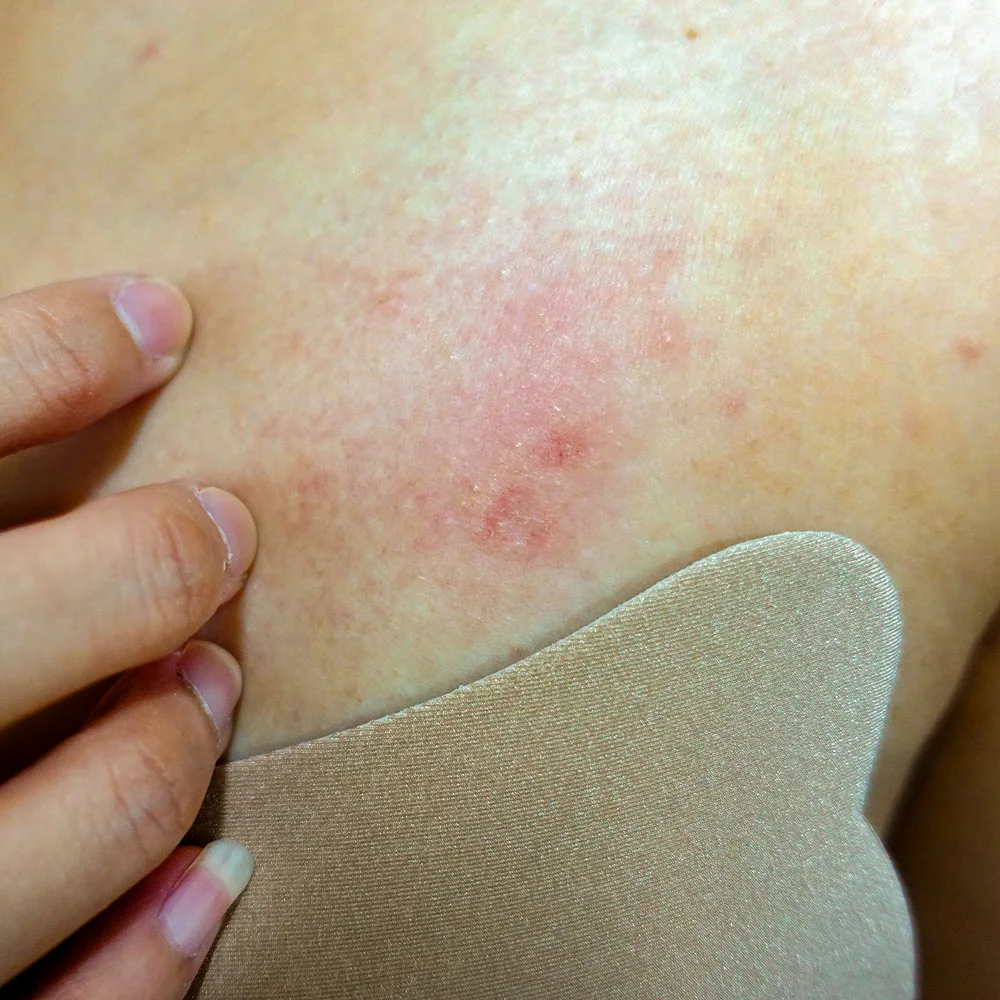Here's what we'll cover
Here's what we'll cover
All people require testosterone to function, which means that all people can also experience testosterone imbalance. Misinformation and stigma have led many to associate high testosterone in women (hyperandrogenism) with bulging bodybuilder muscles. But in reality, high testosterone in women looks quite different.
High testosterone in women may cause unwanted symptoms like excess hair, acne, infertility, weight gain, and more. The condition is often caused by polycystic ovarian syndrome (PCOS). Continue reading to learn more about the symptoms, causes, and treatments for high testosterone in women.
What is testosterone?
Many people think of testosterone as the primary male sex hormone (also known as an androgen). While biological men do have approximately 20–25 times more testosterone than women, the hormone plays an important role in many bodily systems for biological women, too (Fabbri, 2016).
Testosterone is essential to support healthy sex drive, bone density, and more, but it’s also converted to estrogen, the primary sex hormone in biological women (Barbieri, 2021-a).
In men, about 40% of testosterone binds to a protein called sex hormone-binding globulin (SHBG), which carries hormones through the bloodstream. The remaining 60% is readily available for use, called free testosterone. In women, more than 80% of testosterone binds to SHBG, resulting in less free testosterone circulating in the body (Fabbri, 2016).
What does testosterone do for women?
Testosterone is a vital part of women’s health and well-being. The hormone plays a key role in bodily functions, including (Tyagi, 2017):
Sex drive (libido)
Mood stability
Fertility
It’s important to remember that balance is critical—too much or too little testosterone can cause problems.
Symptoms of high testosterone in women
Symptoms of high testosterone in women may include the following (Hall, 2021):
Excess body and facial hair growth (hirsutism)
Weight gain or obesity
Infertility issues
Mood changes
Deepening of the voice
Enlargement of the clitoris
Some studies suggest that high testosterone levels may increase the risk of developing high cholesterol and heart disease (Udoff, 2020).
Causes of high testosterone levels in women
High testosterone in women, or hyperandrogenism, may be caused by several medical conditions, including the following (Hall, 2021; Barbieri, 2022).
Polycystic ovary syndrome (PCOS)
PCOS is a common cause of high testosterone that affects roughly 5–15% of women aged 15–49 in the United States. It’s a complex, underdiagnosed medical condition that can cause many painful symptoms (Rasquin Leon, 2022).
PCOS is a hormonal imbalance that causes symptoms like irregular periods, obesity, excess hair growth, insulin resistance, and small fluid-filled follicles (sacs) on the ovaries. It’s also one of the most common causes of infertility.
Having PCOS increases a woman’s risk of developing diabetes, high blood pressure, high cholesterol, heart disease, and stroke. The causes of PCOS aren’t well understood but are likely related to genetic and lifestyle factors (Rasquin, 2022).
Congenital adrenal hyperplasia (CAH)
CAH is a group of genetic disorders that affect the adrenal glands, which sit on top of your kidneys. Your adrenal glands produce hormones that help regulate your metabolism, immune system, and more.
Women with CAH produce too many androgens and experience symptoms similar to those of PCOS. These include increased facial and body hair, irregular menstrual cycles, and infertility. Mediterranean, Hispanic, and Ashkenazi Jewish women are at a higher risk for CAH than other populations (Nieman, 2019). The condition is typically diagnosed with special blood tests.
Idiopathic hirsutism
In the past, women who experienced abnormal hair growth but had regular periods, healthy androgen levels, and no other underlying issues were diagnosed with idiopathic hirsutism. In other words, hair growth due to unknown causes.
However, the definitions of idiopathic hirsutism and PCOS have changed over the years. It’s likely that many women with this condition may actually have had PCOS before the condition was known (Barbieri, 2021-b).
One study showed that women with idiopathic hirsutism had testosterone levels in a higher than normal range. Researchers also found these women had genetic changes that may have caused them to produce more testosterone in their skin, leading to more hair growth (Taheri, 2015).
Cushing syndrome
Cushing syndrome is another potential cause of high testosterone in women. The condition causes the adrenal glands to secrete more hormones (like androgens and cortisol) than normal. Similarly, adrenal or ovarian tumors that secrete too many androgens will raise testosterone levels (Barbieri, 2021-b).
Hormone therapies
Hormone treatments or drugs like anabolic steroids, testosterone replacement therapy, or DHEA supplementation can cause higher than normal testosterone levels (Barbieri, 2021-b).
Treatment options
If you suspect you have high levels of testosterone, seek medical advice from a healthcare professional. They’ll explore your medical history, perform a physical exam, and conduct blood tests to determine if your hormone levels are abnormal. They may check any or all of the following:
Total and free testosterone levels
Perform a DHEA sulfate test
Conduct ultrasound imaging of ovaries and adrenal glands
If your provider uncovers a clear cause of high testosterone, treating the underlying cause may resolve symptoms and balance hormone levels. However, many people will need medications to treat high testosterone in women, including (Barbieri, 2022):
Oral contraceptive pills: Birth control pills treat high testosterone by increasing estrogen and progesterone levels while lowering androgens.
Spironolactone: Also known as a “water pill,” spironolactone is an anti-androgen drug that decreases testosterone production.
Combination therapy: This involves using both birth control and spironolactone to treat a testosterone imbalance.
Testosterone is essential for the health and wellness of all people. Balance is critical, so problems may arise when testosterone levels are imbalanced. If you have concerns, visit a healthcare provider who can help create a treatment plan that’s right for you.
DISCLAIMER
If you have any medical questions or concerns, please talk to your healthcare provider. The articles on Health Guide are underpinned by peer-reviewed research and information drawn from medical societies and governmental agencies. However, they are not a substitute for professional medical advice, diagnosis, or treatment.
Barbieri, R. L. (2021-a). Steroid hormone metabolism in polycystic ovary syndrome. UpToDate . Retrieved from https://www.uptodate.com/contents/steroid-hormone-metabolism-in-polycystic-ovary-syndrome
Barbieri, R. L. & Ehrmann, D. A. (2021-b). Pathophysiology and causes of hirsutism. UpToDate. Retrieved from https://www.uptodate.com/contents/pathophysiology-and-causes-of-hirsutism
Barbieri, R. L. & Ehrmann, D. A. (2022). Evaluation of premenopausal women with hirsutism. UpToDate. Retrieved from https://www.uptodate.com/contents/evaluation-of-premenopausal-women-with-hirsutism
Centers for Disease Control and Prevention (CDC). (2020). PCOS (Polycystic Ovary Syndrome) and diabetes. Retrieved from https://www.cdc.gov/diabetes/basics/pcos.html
Clark, R. V., Wald, J. A., Swerdloff, R. S., et al. (2019). Large divergence in testosterone concentrations between men and women: Frame of reference for elite athletes in sex-specific competition in sports, a narrative review. Clinical Endocrinology , 90 (1),15–22. doi:10.1111/cen.13840. Retrieved from https://pubmed.ncbi.nlm.nih.gov/30136295/
Fabbri, E., An, Y., Gonzalez-Freire, M., et al. (2016). Bioavailable testosterone linearly declines over a wide age spectrum in men and women from the Baltimore longitudinal study of aging. The Journals Of Gerontology Series A: Biological Sciences and Medical Sciences , 71 (9), 1202-1209. doi:10.1093/gerona/glw021. Retrieved from https://pubmed.ncbi.nlm.nih.gov/26921861/
Hall, J. E. (2021). Evaluation and management of postmenopausal hyperandrogenism. UpToDate. Retrieved from https://www.uptodate.com/contents/evaluation-and-management-of-postmenopausal-hyperandrogenism
Nieman, L. K. & Merke, D. P. (2019). Diagnosis and treatment of nonclassic (late-onset) congenital adrenal hyperplasia due to 21-hydroxylase deficiency. UpToDate. Retrieved from https://www.uptodate.com/contents/diagnosis-and-treatment-of-nonclassic-late-onset-congenital-adrenal-hyperplasia-due-to-21-hydroxylase-deficiency
Rasquin Leon, L. I. & Mayrin, J. V. (2022). Polycystic ovarian disease. StatPearls . Retrieved on Nov. 16, 2022 from https://www.ncbi.nlm.nih.gov/books/NBK459251/
Taheri, S., Zararsiz, G., Karaburgu, S., et al. (2015). Is idiopathic hirsutism (IH) really idiopathic? mRNA expressions of skin steroidogenic enzymes in women with IH. European Journal of Endocrinology , 173 (4), 447-454. doi:10.1530/EJE-15-0460. Retrieved from https://pubmed.ncbi.nlm.nih.gov/26194504
Tyagi, V., Scordo, M., Yoon, R. S., et al. (2017). Revisiting the role of testosterone: Are we missing something? Reviews in Urology , 19 (1), 16–24. doi:10.3909/riu0716. Retrieved from https://pubmed.ncbi.nlm.nih.gov/28522926/
Udoff, L. C. (2020). Overview of androgen deficiency and therapy in women. UpToDate. Retrieved from https://www.uptodate.com/contents/overview-of-androgen-deficiency-and-therapy-in-women










